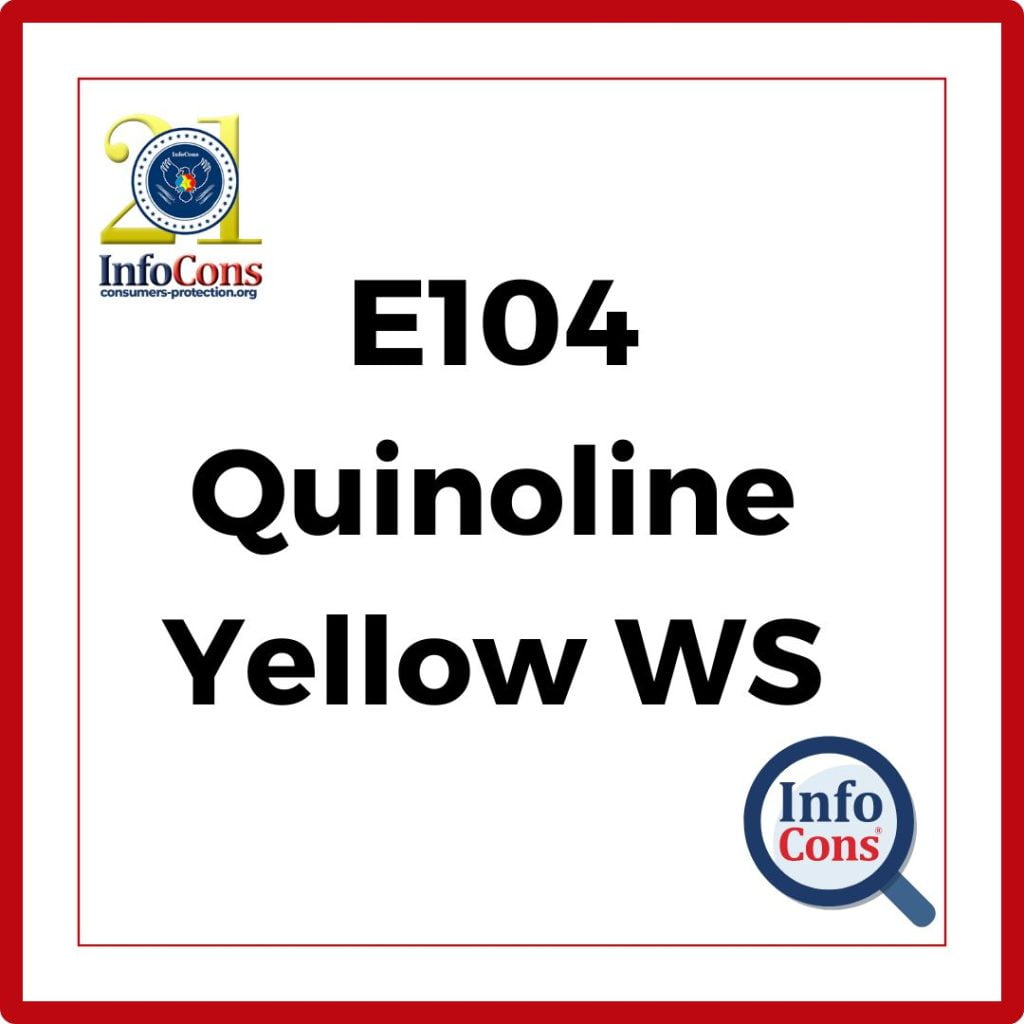What is Food Additive E104 (Quinoline Yellow) ?
Quinoline Yellow (E104) is a synthetic non-azo dye authorized as a food additive in Europe, in accordance with Regulation (EC) No. 1333/2008 of the European Union. It is used to achieve a yellow-green color in feed, food, cosmetics, supplements, and medicines. Due to the presence of sulfonate groups, Quinoline Yellow is water-soluble. It is a mixture of disulfonates (primarily), monosulfonates, and trisulfonates, with the molecular formula C18H11NO2.
Read also – E142 – Brilliant Green
What is the recommended daily dose ?
The European Food Safety Authority (EFSA) issued a scientific opinion on the reevaluation of Quinoline Yellow (E104) in 2015 and concluded that the maximum permissible daily dose is 0-5 mg per kg of body weight per day. The previously established dose of 0-10 mg per kg of body weight was withdrawn, being considered unsafe.
E104 is recommended to be safe if the daily intake is limited. It is recommended to carefully read food labels, as the daily dose can easily be exceeded by the cumulative amount of additives from various products consumed in a day.
In most european countries, the use of additive E104 is strictly regulated and typically amounts to 25-500 mg of dye per kilogram of the finished product, depending on the field of use.
Read also – E140 – Chlorophylls
In which foods is food additive E104 found?
Quinoline Yellow (E104) is found in jams and jellies, bakery and pastry products, confectionery, ice cream, chewing gum, dairy products, non-alcoholic and alcoholic beverages, spices, smoked fish, fish roe, fish paste, and crustacean paste. It is also found in cosmetics, in lipsticks, lotions, soap, shampoo, bubble bath, as well as in medicines and supplements.
Contraindications and Risks
It is not used in foods intended for infants and young children. The EFSA published a study where it concluded that some sensitivity reactions following the administration of Quinoline Yellow (urticaria, rhinitis, and bronchial asthma) have been reported, especially when this additive is associated with a mixture of other synthetic colors. The study also specifies that E104 represents an additional source of aluminum, which is why it was considered necessary to reduce the daily dose from 0-10 mg to 0-5 mg per kg of body weight per day.
In products intended for children, adverse effects such as allergies, respiratory irritations, skin rashes, and hyperactivity have been reported. Although it is a permitted additive in the European Union for food products, it is banned in countries such as Australia, Japan, Norway, and the United States.
Did you know: Did you know that 1 in 6 European citizens suffers from obesity ? Find out what you’re eating with the European InfoCons App !
Limiting the amount of E104 in your diet
By reading nutritional labels and observing the contents of products in the daily basket, consumers can limit foods that contain this food additive. They can try to limit some products that have a rich list of ingredients and especially have many additives, colors, flavors, and sweeteners, such as:
- Soft drinks and energy drinks
- Intensely colored sweets, croissants, bakery products
- Soup bases, instant soups, seasoning mix packets with various flavors
- Processed meats, margarine, mayonnaise, and processed cheese
- Fast food items
By installing the InfoCons app and scanning the barcodes of food products, you can find out the number and type of food additives used.
Author – Cosmina Nițu
Master in Nutrition – Infant and new born nutrition
Sources:
https://pubchem.ncbi.nlm.nih.gov/ – National Center for Biotechnology Information
https://apps.who.int/- World Health Organization
https://efsa.onlinelibrary.wiley.com/- European Food Safety Authority
https://www.sciencedirect.com/ – Science Direct
InfoCons – European Organization for Consumers Protection and Promotion of Programs and Strategies , a full member of the World Organization Consumers International, founding member of the Federation of Consumer Associations, and member of ANEC.
